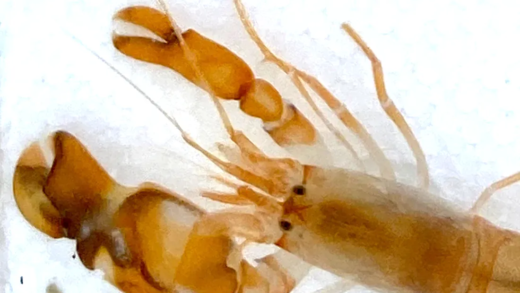This article explores the fascinating world of catfishing, detailing the record for the largest catfish, techniques for catching them, and the unique aspects that differentiate catfishing from other fishing methods. It also highlights the best locations for large catfish and the environmental factors influencing their growth, alongside the evolution of catfishing as a sport.
Biggest Catfish Ever Caught
The largest catfish ever caught holds an astonishing record that anglers and enthusiasts alike marvel at. As of now, the record is held by a Mekong giant catfish (Pangasianodon gigas) weighing in at a jaw-dropping 646 pounds (293 kg). This massive fish was caught in northern Thailand in 2005, making it not only the largest catfish but also one of the largest freshwater fish ever recorded.
This remarkable catch has sparked interest in the potential size that catfish can reach and has encouraged many to pursue catfishing as both a sport and a hobby. The Mekong giant catfish is critically endangered, which adds a layer of urgency to conservation efforts. Catching such a huge fish is no small feat, and it often requires specialized equipment and techniques, making it a coveted achievement for anglers.
Where Was It Caught?
The location of the largest catfish catch is as fascinating as the fish itself. The record-breaking Mekong giant catfish was pulled from the waters of the Mekong River in Thailand, a region known for its rich biodiversity. This river stretches over 2,700 miles, flowing through several countries in Southeast Asia, and is home to various aquatic species, making it an ideal spot for fishing.
Fishing in the Mekong River offers not just the chance to catch large catfish, but also to experience the beautiful landscapes and diverse cultures along its banks. Anglers often travel from around the world to this region, hoping to replicate the success of the lucky fisherman who landed the record catfish.
Species of Giant Catfish
The species that holds the record for the largest size is the Mekong giant catfish. This species can grow to enormous lengths, often exceeding 10 feet in length. Other notable species include the Nile catfish and the Wels catfish, both known for their impressive sizes. While the Mekong giant catfish takes the crown for weight, the Wels catfish is famous for its length, with some specimens recorded at over 16 feet.
Understanding the different species of giant catfish is crucial for anglers. Each species has unique habitats and behaviors, influencing the techniques used for fishing them. For instance, while Mekong catfish prefer riverine environments, Wels catfish can thrive in both rivers and lakes, showcasing the adaptability of these remarkable fish.
Weight of the Biggest Catfish
The weight of the biggest catfish ever recorded stands at an incredible 646 pounds (293 kg). This astonishing weight was achieved by the Mekong giant catfish, a species renowned for its massive size. Such weight is not just a number; it reflects the incredible growth potential of these fish, which can live for decades under the right conditions. The record catfish showcases the remarkable capabilities of freshwater ecosystems to support such large creatures.
For anglers, understanding the weight of these giants can help set realistic expectations during their fishing adventures. Catfish can grow rapidly if they have access to ample food and suitable habitats. Factors such as water temperature, availability of prey, and habitat structure play significant roles in determining the growth rates of these fish.
Techniques for Catching Giant Catfish
When it comes to catching giant catfish, anglers employ a variety of techniques tailored to the specific behaviors of these massive fish. Here are some effective methods:
- Bottom Fishing: This technique involves using heavy weights to keep bait near the bottom where catfish often feed. Live bait like shad or cut bait works well.
- Jug Fishing: Anglers use floating jugs with baited hooks attached. This method allows for covering a larger area, making it easier to locate catfish.
- Rod and Reel: A strong rod paired with a sturdy reel is essential. Use heavy line and large hooks to handle the weight of these fish.
- Bowfishing: An exciting method where archers shoot fish with a bow and arrow, ideal for targeting catfish in shallow waters at night.
Each of these techniques requires specific gear and knowledge about the fish’s habits. For instance, night fishing can yield better results as catfish are more active after dark. Observing local fishing reports and chatting with other anglers can also provide insights into the best techniques for the area.
Interesting Catfishing Stories
Catfishing is not just about the catch; it’s also about the stories that come with the experience. One memorable tale involves an angler who hooked a giant catfish only to discover it was tangled in a discarded fishing net. After an intense struggle, they freed the fish and released it back into the water, a true testament to the importance of conservation.
Another story tells of a family fishing trip where a young boy caught a catfish so large that it nearly pulled him into the water! The laughter and excitement of that moment became a cherished family memory, illustrating how catfishing can create lasting bonds. These anecdotes highlight the thrill of the chase and the unexpected surprises that often accompany a day on the water.
Differences Between Catfishing and Other Fishing
Catfishing stands out from other types of fishing due to its unique techniques, targeted species, and the sheer thrill it offers. Unlike traditional fishing that often focuses on a variety of species, catfishing is specifically aimed at catching catfish, which are known for their size and strength. This sport often requires different gear and approaches, tailored to the habits and habitats of catfish.
Here are some key differences that set catfishing apart:
- Target Species: Catfishing primarily targets species like the Mekong giant catfish, Wels catfish, and Nile catfish, which can grow to massive sizes, unlike many other fish.
- Techniques: Techniques for catfishing often involve heavy tackle and specific bait types like live or cut bait, while other fishing methods may use lighter gear and different bait.
- Time of Day: Catfish are often more active during the night, making nocturnal fishing trips more common among catfish anglers, unlike many other fish which may bite better during the day.
- Environment: Catfish thrive in a variety of environments, from rivers to lakes, but they often prefer areas with plenty of cover, such as logs and rocks, which differs from other fishing strategies.
These factors contribute to the excitement and challenge of catfishing, making it a distinct sport for enthusiasts seeking adventure on the water.
Best Locations for Large Catfish
When it comes to finding the best locations for large catfish, several regions stand out for their rich aquatic ecosystems that support the growth of these giants. Notable areas include:
- Mekong River, Thailand: Renowned for the Mekong giant catfish, this river is a prime spot for serious anglers seeking record-breaking catches.
- Mississippi River, USA: Home to large populations of channel catfish and flathead catfish, this river offers vast stretches of water ideal for catfishing.
- Danube River, Europe: This river supports various catfish species, including the Wels catfish, making it a popular destination for anglers across the continent.
- Lake Texoma, USA: Known for its trophy catfish, this lake attracts anglers from all over for its abundant catfish population.
These locations not only provide opportunities for substantial catches but also feature beautiful landscapes and rich biodiversity, enhancing the overall fishing experience.
Environmental Factors for Giant Catfish Growth
The growth of giant catfish is heavily influenced by several environmental factors that create optimal living conditions. Key factors include:
- Water Temperature: Catfish thrive in warmer waters, typically between 70°F and 85°F (21°C to 29°C), which promotes faster growth rates.
- Food Availability: A rich food source, including smaller fish and aquatic invertebrates, is essential for catfish to reach their maximum size.
- Habitat Structure: Environments with plenty of cover, such as submerged logs and vegetation, not only provide shelter but also serve as hunting grounds for catfish.
- Water Quality: Clean, well-oxygenated water is crucial for the health of catfish populations, influencing their growth and reproductive success.
Understanding these factors can help anglers identify prime fishing spots and improve their chances of landing large catfish.
The Evolution of Catfishing as a Sport
Catfishing has evolved significantly over the years, transforming from a traditional activity into a popular sport. Historically, catfishing was primarily a means of sustenance, but it has since become a recreational pursuit enjoyed by many. The growth of technology and fishing gear has made catfishing more accessible, allowing anglers to target larger species with specialized equipment.
Today, catfishing tournaments and events celebrate this sport, showcasing anglers’ skills and providing a sense of community among enthusiasts. The focus has shifted to not just catching fish, but also promoting conservation efforts to protect these magnificent creatures and their habitats. As awareness of environmental issues grows, so does the commitment to sustainable practices within the catfishing community.





Comments are closed.